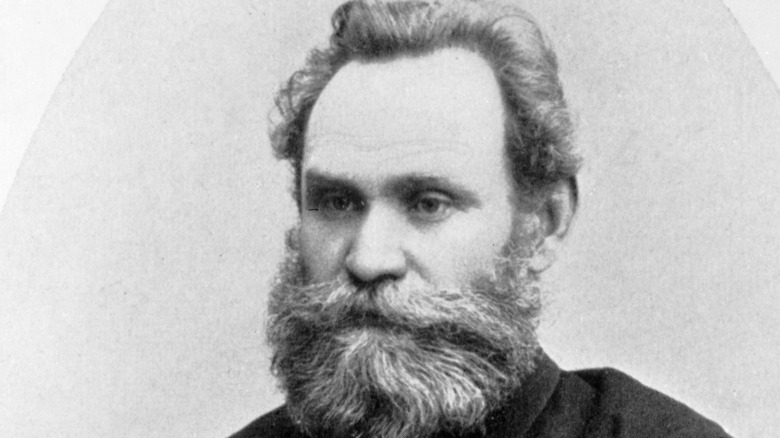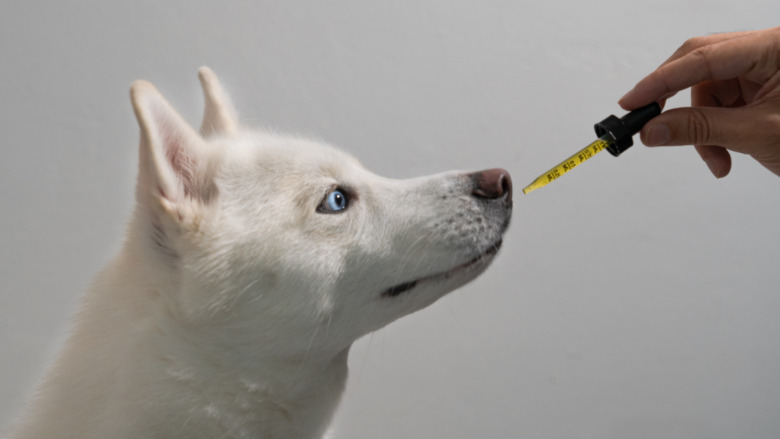The Weird Thing Pavlov And His Mistress Tried To Turn Dogs Into
Ivan Pavlov's groundbreaking research into learning and behavior laid the foundation for a significant amount of psychological research through his study of classical conditioning. He's perhaps most famous for making dogs salivate at the sound of a bell, after conditioning the animals to associate the sound with the arrival of food. Using the tenets of classical conditioning, scientists are now able to harness conditioned place preference, a form of Pavlovian conditioning used to gauge the addictive effects of various drugs and the effectiveness of counteracting substances, per Methods of Behavior Analysis in Neuroscience.
The undeniable and far-reaching benefits of Pavlov's research can be traced back to some pretty bizarre experimentation. One particular episode began with his mistress Maria Petrova, with whom he began having sexual relations in spite of his devoted wife, Serafima Vasilievna Karchevskaya, a woman who had built her life around pleasing the researcher's every desire.
In the passion of the pair's fling, they began conducting experiments that hinged on two very specific variables: alcohol and dogs. The end goal was to turn the dogs into alcoholics and study its effects on their brains.
Pavlov's research was a precursor to modern addiction research
Despite the strange foundation of Pavlov's alcohol research, it's not hard to see similarities between his work and modern addiction experiments conducted on laboratory rats. According to "Ivan Pavlov: A Russian Life in Science," the researcher's experimentation with alcohol on dogs came from his observation that the substance has caused so many human beings to die in the clutches of its embrace.
With his goal in mind, Pavlov and his mistress found five dogs, a mix of both normal and neurotic disposition, and provided them alcohol on a regular basis while they observed their conditioned reflexes. The goal of Pavlov's research was to determine how alcohol affected the "higher nervous activity" of the dogs, to look for signs of addiction and phobias.
Although the research did not appear to lead to groundbreaking research at the time, one interesting tidbit of this time is one dog who was determined to show symptoms that mirrored an alcoholic's delusions of persecution.

